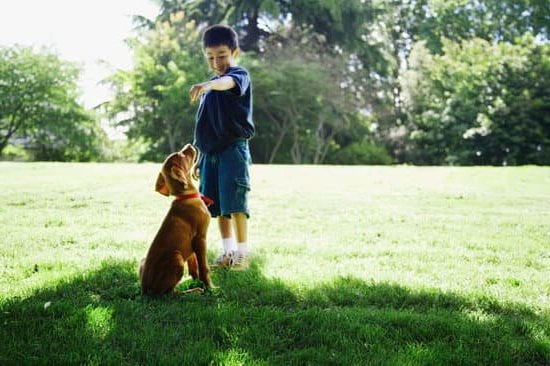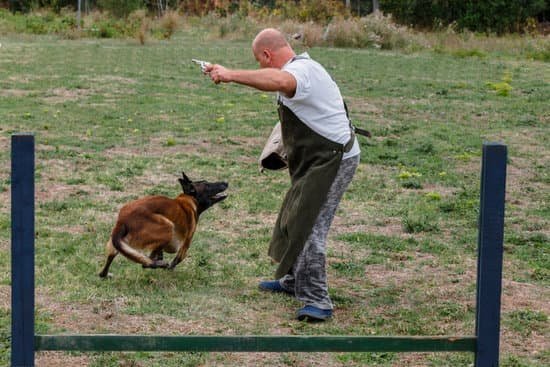Dogs and cats are known to have a complex relationship, often portrayed as natural rivals in the animal kingdom. One common issue that many pet owners face is how to train a dog not to run after cats. Understanding the instincts of both species is crucial in addressing this behavior effectively.
Dogs, being predators by nature, are inclined to chase small animals like cats due to their prey drive. On the other hand, cats have a strong instinct for self-preservation and may become fearful or defensive when chased by a dog. This can create tension and potentially dangerous situations in a household with both pets.
In this article, we will delve into the reasons why dogs chase cats, exploring the root of this behavior. We will discuss practical strategies such as establishing boundaries, positive reinforcement training, consistency in training sessions, distraction techniques, leash training, and knowing when to seek professional help. By understanding the dynamics between dogs and cats, pet owners can create a harmonious environment where both pets can coexist peacefully.
Why Do Dogs Chase Cats
Dog Instincts vs. Cat Instincts
When it comes to understanding why dogs chase cats, it’s essential to consider the natural instincts of both animals. Dogs are predators by nature, with a strong prey drive that compels them to chase after smaller animals. On the other hand, cats have a strong sense of self-preservation and are known for their agility and speed when being chased. This fundamental difference in instincts can lead to conflicts between dogs and cats in a household.
Understanding the Trigger
In many cases, a dog chasing a cat is triggered by the cat’s sudden movements or attempts to flee. The quick, jerky motions of a cat trigger the dog’s chase response, as it activates their predatory instincts. Additionally, some dogs may have had previous negative experiences with cats or other small animals, leading to fear-based reactions that manifest as chasing behavior. Understanding these triggers is crucial in addressing and modifying your dog’s behavior.
Addressing the Root Cause
To effectively train a dog not to run after cats, it’s important to address the root cause of this behavior. By creating a safe environment for both your dog and cat, setting boundaries, using positive reinforcement techniques, and providing consistent training sessions, you can help redirect your dog’s focus and mitigate their urge to chase cats.
With patience, understanding, and dedication to training, you can foster a harmonious relationship between your dog and cat while ensuring the safety and well-being of both pets.
Establishing Boundaries
When it comes to training a dog not to run after cats, one crucial aspect is creating a safe space for both pets to coexist peacefully. This safe space should be an area where your cat feels secure and can retreat to when needed, away from the dog’s playful or predatory instincts. This could include setting up high shelves, cat trees, or designated rooms that are off-limits to the dog.
Introducing baby gates or pet barriers can also help in establishing physical boundaries between your dog and cat. This allows the cat to have separate areas where they can feel safe without being chased by the dog. By giving each pet their own space within the home, you can minimize the chances of unwanted interactions and reduce stress for both animals.
In addition to physical boundaries, it’s essential to create emotional boundaries as well. This involves teaching your dog commands such as “leave it” or “stay” when around the cat. Through consistent training and positive reinforcement, you can help your dog understand that chasing or bothering the cat is not acceptable behavior. It may take time and patience, but with dedication and the right approach, you can successfully train your dog not to run after cats.
| Establishing Boundaries | Safe Space Tips |
|---|---|
| Create physical boundaries using pet gates | Setting up high shelves or designated rooms |
| Teach commands like “leave it” or “stay” | Use positive reinforcement for desired behavior |
Positive Reinforcement Training
Training a dog not to run after cats can be challenging but with the right techniques and consistency, it is possible to redirect their behavior. Positive reinforcement training is a highly effective method that focuses on rewarding desired behaviors rather than punishing unwanted ones. By using treats and praise, you can encourage your dog to make better choices when around cats.
Here are some strategies for incorporating positive reinforcement into your training sessions:
- Use high-value treats that your dog loves such as cooked chicken or cheese.
- When your dog shows calm behavior around the cat, immediately reward them with a treat and praise.
- Be consistent in rewarding good behavior and ignore any attempts to chase or lunge at the cat.
By consistently rewarding your dog for staying calm around cats, you are reinforcing the idea that this behavior is desirable. Over time, they will learn that good things happen when they refrain from chasing cats and will be more likely to repeat this behavior in the future.
In addition to treats, verbal praise and affection can also play a crucial role in positive reinforcement training. Dogs thrive on their owner’s approval and by showering them with praise when they behave appropriately around cats, you are strengthening their bond with you while shaping their behavior. Remember, patience and consistency are key when using positive reinforcement to train your dog not to run after cats.
Consistency Is Key
Dogs, by nature, can exhibit behaviors such as chasing after cats due to their predatory instincts. It is essential for dog owners to understand this behavior and work towards training their dogs not to run after cats. Consistency plays a significant role in this training process as it helps reinforce positive behaviors and minimize unwanted actions.
To effectively train a dog not to run after cats, consistency in the training approach is crucial. One method is to establish a consistent routine for training sessions. This routine should include regular practice sessions where you work on redirecting your dog’s focus away from chasing cats and towards more appropriate behaviors. By sticking to a set schedule, your dog will start associating specific cues or commands with the desired behavior.
During training sessions focused on curbing the instinct to chase cats, it is important to use positive reinforcement techniques. Rewarding your dog with treats or praise when they successfully ignore a passing cat can help reinforce the desired behavior. Consistent positive reinforcement will encourage your dog to repeat these actions in the future. All these elements combined can significantly aid in teaching your dog how to behave appropriately around cats without running after them.
| Training Method | Description |
|---|---|
| Positive Reinforcement | Rewarding good behavior with treats or praise |
| Consistent Routine | Establishing a set schedule for training sessions |
| Redirecting Focus | Teaching dogs to shift their attention away from chasing cats |
Distraction Techniques
Dogs can have a natural instinct to chase after cats due to their prey drive, which is deeply ingrained in their DNA. To effectively train a dog not to run after cats, it is crucial to understand this behavior and take proactive steps to redirect it. Distraction techniques can be valuable tools in managing your dog’s impulses and teaching them appropriate behavior around feline companions.
Here are some distraction techniques that can help you train your dog not to run after cats:
- Interactive Toys: Providing your dog with interactive toys can help redirect their focus and energy away from chasing cats. Toys that require mental stimulation, such as puzzle feeders or treat dispensers, can keep your dog engaged and distracted.
- Training Aids: Using training aids like noise-making devices or deterrent sprays can help interrupt your dog’s behavior when they start to chase after a cat. These aids can be effective in stopping the unwanted behavior and redirecting your dog’s attention.
Consistency is key when implementing distraction techniques. It is essential to use these tools consistently during training sessions and whenever your dog shows interest in chasing cats. Over time, with patience and persistence, you can effectively teach your dog not to run after cats by using distraction techniques in combination with positive reinforcement training methods.
Remember that every dog is different, so finding the right combination of distraction techniques that work for your furry friend may require some trial and error. Stay patient, stay consistent, and always reward good behavior with treats and praise. With dedication and the right tools at hand, you can successfully train your dog not to chase after cats and foster a harmonious relationship between your canine companion and feline friend.
Leash Training
Understanding the Importance of Leash Training
Leash training is a crucial aspect of teaching your dog not to run after cats. By having your dog on a leash, you have better control over their movements and can prevent any sudden dashes towards feline friends. It also helps establish boundaries and reinforces your role as the leader in the relationship with your dog. This training not only keeps your cat safe but also ensures the safety of other animals in the neighborhood.
Start Slow and Gradual Introductions
When beginning leash training, it’s essential to start slow and gradually introduce your dog to walking on a leash without pulling or lunging towards cats. Start by allowing your dog to get used to wearing a leash indoors without any distractions.
Once they are comfortable, slowly introduce them to walking outdoors on a leash while keeping a safe distance from any cats in the vicinity. It’s important to remain patient and consistent during this process, rewarding positive behavior with treats and praise.
Practicing Walking Techniques
During leash training, practice walking techniques such as maintaining a loose leash and using verbal cues like “heel” or “leave it” when your dog shows interest in chasing cats. Consistency is key in reinforcing these commands, so be sure to practice regularly.
If your dog does attempt to lunge at a cat, gently redirect their attention back to you using treats or toys as a distraction. With time and practice, your dog will learn to walk nicely on a leash without running after cats.
Seeking Professional Help
A professional dog trainer can provide valuable insight into why your dog is chasing cats and offer tailored solutions to address this behavior. They have the experience and knowledge to create a customized training plan that takes into account your dog’s individual personality, breed characteristics, and any underlying issues that may be contributing to the problem. By working with a trainer, you can ensure that you are using effective and humane training techniques to modify your dog’s behavior.
Additionally, consulting a professional can help you gain a better understanding of how to train a dog not to run after cats in a way that promotes positive and healthy interactions between your pets. Trainers can provide guidance on creating a harmonious environment for both your cat and dog, enabling them to coexist peacefully in the same household. Ultimately, seeking professional help demonstrates your commitment to resolving the issue and fostering a safe and happy relationship between your furry companions.
Conclusion
In conclusion, training a dog not to run after cats is a process that requires patience, consistency, and positive reinforcement. Understanding the instincts of both dogs and cats is crucial in addressing this behavior. By acknowledging why dogs chase cats in the first place, pet owners can effectively work towards redirecting this behavior through proper training techniques.
Establishing boundaries and creating a safe space for both pets within the household is essential. Utilizing positive reinforcement training methods, such as treats and praise, can help encourage good behavior and discourage chasing. Consistency in training sessions is key to reinforcing new habits and ensuring lasting results. Encouraging distraction techniques and incorporating leash training can also aid in preventing dogs from running after cats.
While some pet owners may find it challenging to train their dog not to chase cats on their own, seeking professional help from a trainer could be beneficial. A professional trainer can provide guidance, support, and personalized strategies tailored to address specific behaviors or challenges.
Ultimately, celebrating progress along the way and building a strong relationship between dogs and cats is vital for fostering harmony within a multi-pet household. By following these steps consistently and with dedication, pet owners can successfully train their dogs not to run after cats and create a peaceful environment for all furry family members.
Frequently Asked Questions
How Do I Train My Dog to Leave the Cat Alone?
Training your dog to leave the cat alone requires patience and consistency. Start by teaching basic commands like “leave it” and “stay.” Gradually introduce them to each other in a controlled environment, rewarding positive interactions.
How Do You Desensitize a Dog From a Cat?
Desensitizing a dog from a cat involves exposing them to the cat in a gradual and controlled manner. Start with scent swapping their belongings, then move on to visual exposure from a distance. Reward calm behavior and slowly decrease the distance between them.
Can You Train a Dog to Tolerate Cats?
Yes, it is possible to train a dog to tolerate cats through positive reinforcement and careful introductions. Create a safe space for both animals, supervise their interactions, and reward good behavior. Consistency is key in building trust and harmony between them.

Welcome to the blog! I am a professional dog trainer and have been working with dogs for many years. In this blog, I will be discussing various topics related to dog training, including tips, tricks, and advice. I hope you find this information helpful and informative. Thanks for reading!





